The Blue Heeler, also known as the Queensland Heeler or Australian Cattle Dog, is a highly intelligent and energetic breed that has gained popularity over the years. When considering adding a Blue Heeler to your family, it’s important to understand the potential costs associated with acquiring and owning one. The price of a Blue Heeler can vary depending on several factors, including the source from which you obtain the dog. There are also various other initial costs and ongoing costs associated with owning a Blue Heeler. Let’s explore the average Blue Heeler prices and the various price ranges associated with caring for this breed.
How Much Does a Blue Heeler Puppy Cost?
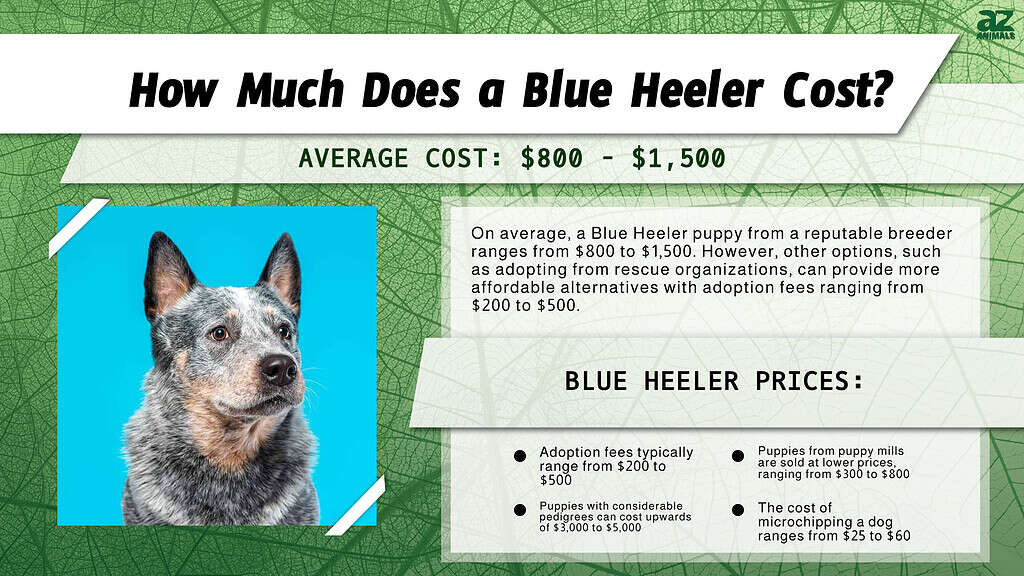
Reputable Breeders
On average, Blue Heeler prices for a puppy from a reputable breeder range from $800 to $1,500. Reputable breeders are committed to producing healthy, well-socialized puppies with sound temperaments. They adhere to ethical breeding practices, including health testing their breeding stock for genetic conditions that may affect the breed. These breeders invest time, effort, and resources into breeding high-quality Blue Heelers, contributing to the higher price tag. Additionally, reputable breeders often provide ongoing support and guidance to new owners, ensuring the best possible start for the puppy. True reputable breeders also provide a lifetime support system for every puppy if the need arises, ensuring none of the dogs bred by them end up in shelters or unwanted homes.
It’s important to note that purchasing a Blue Heeler from a reputable breeder is not only about the cost but also about the quality of the dog and the assurance that you support responsible breeding practices. Reputable breeders prioritize the health and well-being of their dogs and aim to produce puppies that conform to breed standards.
Rescues
However, other options are available if you are on a tighter budget or prefer to adopt. Rescue organizations and shelters often have Blue Heelers or Blue Heeler mixes available for adoption at a significantly lower cost. Adoption fees typically range from $200 to $500, depending on the organization and location. These fees help cover the costs of vaccinations, spaying/neutering, and other necessary veterinary care provided to the dog while in the rescue’s care. Adopting a Blue Heeler not only offers a loving home for a deserving dog but also supports the valuable work of rescue organizations.
Puppy Mills and Pet Stores
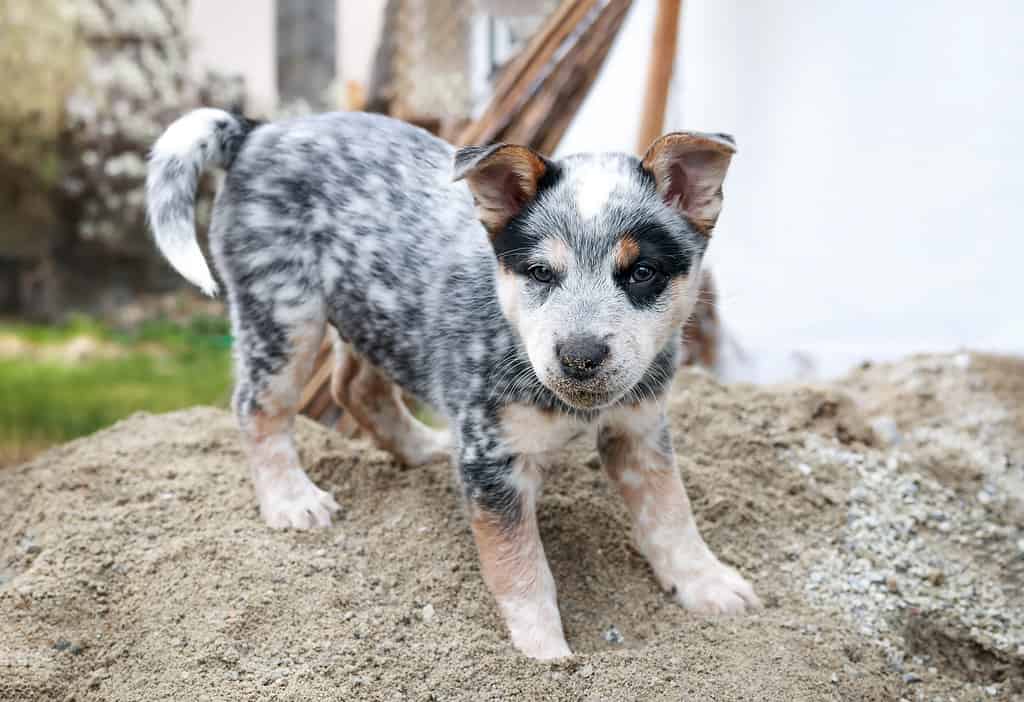
Blue Heeler puppies from reputable breeders cost, on average, $800 to $1,500.
©Petra Richli/ via Getty Images
Puppy mills and pet stores, on the other hand, should be avoided. These commercial breeding facilities prioritize profit above all else. They often neglect the welfare of the dogs, subjecting them to overcrowded and unsanitary conditions. Puppies from puppy mills are sold at lower prices, ranging from $300 to $800. Still, they often come with significant health and behavioral issues due to poor breeding practices and deficiency of proper socialization. Supporting puppy mills perpetuates the cycle of unethical breeding and contributes to the suffering of dogs.
Overall, there are various Blue Heeler prices depending on the source from which you obtain the dog. Reputable breeders provide healthy, well-socialized puppies but come with a higher price tag. Rescue organizations offer lower-cost options for adoption, supporting the work they do. It’s crucial to avoid purchasing from puppy mills and pet stores, as they contribute to the unethical treatment of dogs and often result in unhealthy puppies.
Other Factors That Influence the Purchase Price of a Blue Heeler
Coat Color and Pattern
The Blue Heeler, or Queensland Heeler, is a single breed recognized by kennel clubs such as the American Kennel Club (AKC) and the Australian National Kennel Council (ANKC). While there is only one recognized breed of Queensland Heeler, it is most commonly differentiated by two distinct coat colors, the Blue Heeler and the Red Heeler, which is its most prominent variation within the breed. The Blue Heeler has three recognized coat patterns, which include blue, blue mottled, and blue speckled. The Red Heeler has two recognized coat patterns, which include red mottled and red speckled. When comparing the coat color and pattern, Red Heeler puppies can cost slightly more as they are somewhat less common compared to Blue Heeler puppies.
Pedigree
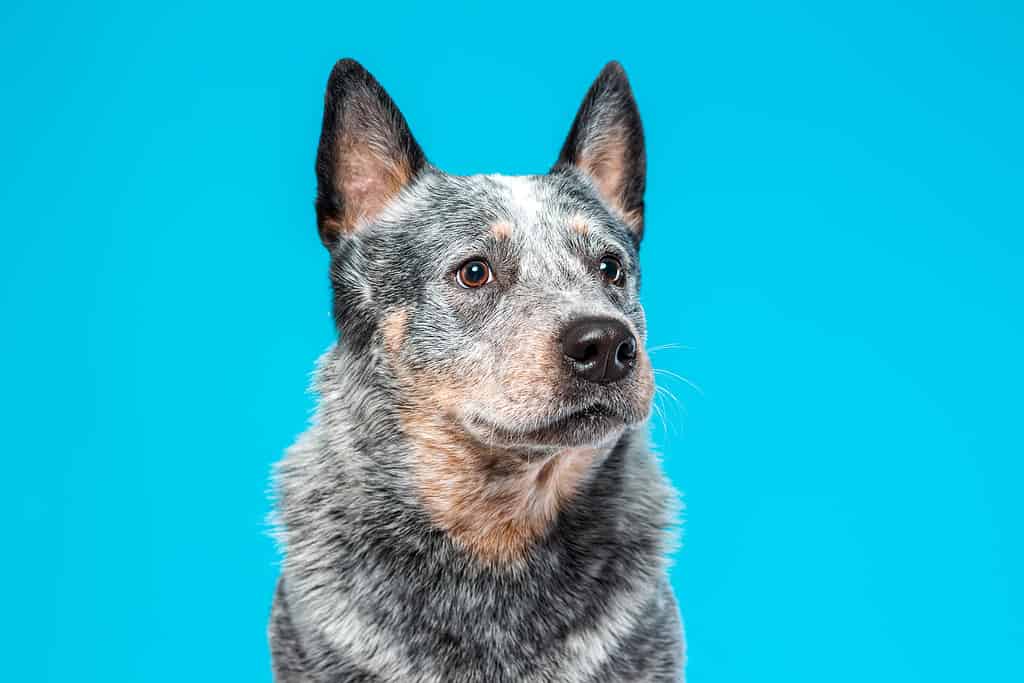
Blue Heelers are also known as Queensland Heelers or Australian Cattle Dogs.
©Irina Nedikova/ via Getty Images
The pedigree or lineage plays a significant role in determining Blue Heeler prices. Lineage refers to the dog’s ancestry and the reputation and achievements of its parents and ancestors. Dogs from champion bloodlines or those with successful show careers or working careers may command higher prices due to their potential for similar accomplishments. The lineage can indicate the dog’s genetic predispositions, health history, and desirable traits, valued by breed enthusiasts and those interested in activities such as conformation shows, obedience trials, or herding competitions. The prestige and recognition associated with exceptional lineage contribute to the higher price of these dogs. Puppies with considerable pedigrees can cost upwards of $3,000 to $5,000.
Location
Location is another factor that can influence Blue Heeler prices. Prices can vary based on the demand for the breed in a particular area and the availability of breeders or reputable sources. The price tends to be higher in areas where Blue Heelers are in high demand and have limited availability. Additionally, the cost of living and economic factors in different regions can impact the overall price of dogs. In areas with higher costs of veterinary care, transportation, or breeding facilities, the price of Blue Heelers may reflect these expenses.
Breeder Reputation
Moreover, the reputation and quality of the breeder or source can affect Blue Heeler prices. Reputable breeders who prioritize health testing, responsible breeding practices, desirable pedigree, and the overall well-being of the dogs and therefore charge higher prices. They invest time, effort, and resources in producing healthy and well-socialized puppies, contributing to the increased cost. These breeders may also provide ongoing support and guidance to owners.
Other Notable Factors
The Blue Heeler is a medium-sized, sturdy, muscular dog with keen intelligence and strong herding instincts. The breed originated in Australia and was developed specifically for herding cattle in challenging and rugged conditions.
Although there is only one recognized breed, Queensland Heelers may display some variations in appearance and temperament due to differences in bloodlines and breeding practices. These variations can be influenced by factors such as the dogs’ specific working lines or show lines. These variations result in individual differences within the breed standard, affecting the puppy’s or dog’s price.
Finally, it’s important to note that while coat color and markings, lineage, and location can impact Blue Heeler prices, they should not be the sole factors considered when acquiring a dog. A priority as a prospective owner includes the health, temperament, compatibility with your lifestyle, and ethical breeding practices of the dog.
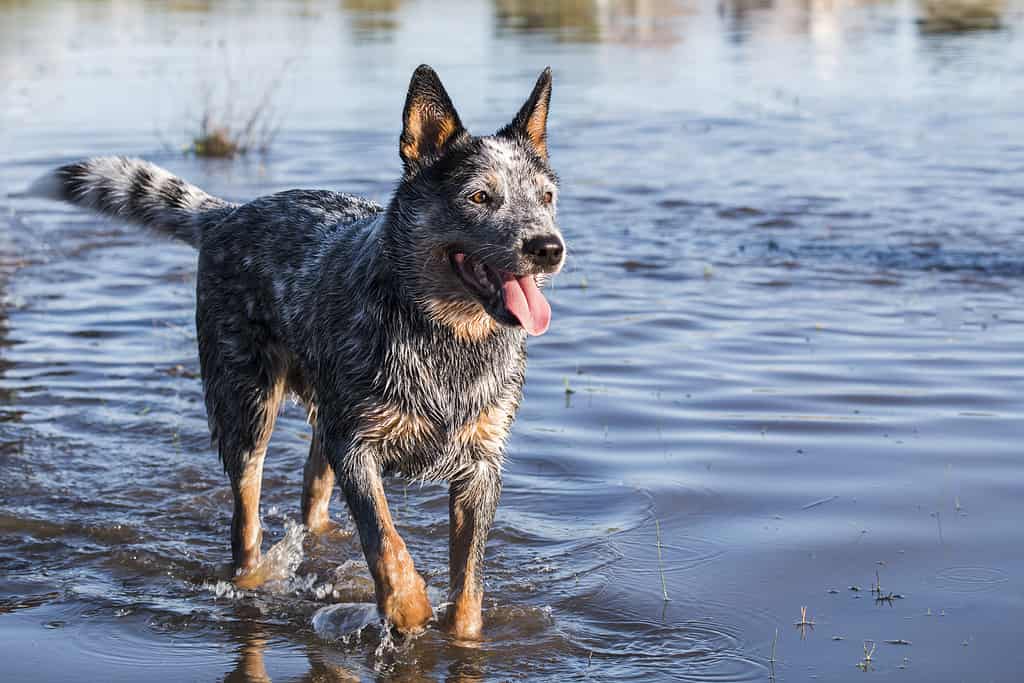
Blue Heelers are incredibly strong and intelligent. They require plentiful exercise and stimulation.
©Madelein_Wolf/ via Getty Images
Cost of Vaccination and Other Medical Expenses for a Blue Heeler
When buying or adopting a Blue Heeler, it’s essential to consider the costs associated with their medical care. Vaccinations and other medical expenses are critical for ensuring the health and well-being of your new furry companion.
Vaccinations
The cost of vaccinations for a Blue Heeler can vary depending on your location, your chosen veterinarian, and the specific vaccines required. Typically, a series of vaccinations is needed to protect the dog against common infectious diseases. These vaccines may include core vaccines such as rabies, distemper, parvovirus, and adenovirus. Additionally, non-core vaccines like leptospirosis or Bordetella may be recommended based on the dog’s lifestyle and exposure risks. On average, the initial set of vaccinations for a Blue Heeler can range from $75 to $200 or more, with subsequent booster shots needed at specific intervals.
Microchipping
A popular modern form of identification for pets is microchipping. It is a simple and effective way to ensure the identification and safe return of your Blue Heeler if they were to get lost. The cost of microchipping can vary depending on your location and the veterinary clinic or organization providing the service. On average, the cost of microchipping a dog ranges from $25 to $60. This one-time expense gives lifelong identification to your Blue Heeler. It also increases the chances of reuniting with them if they ever go missing.
Spaying or Neutering
Spaying (for females) or neutering (for males) is a common practice. It is not necessary, but depending on your dog’s lifestyle or individual circumstances, it is an option to consider based on making an informed decision. The cost of spaying or neutering a Blue Heeler can vary based on factors such as the age, size, and gender of your dog and the veterinary clinic you choose. On average, the cost of spaying or neutering a dog can range from $200 to $500. It’s important to consult with your veterinarian to determine the best time for the procedure based on your dog’s health and development.
Routine Preventive Care and Wellness Exams
In addition to vaccinations, there are other medical expenses to consider. These expenses include routine preventive care such as annual wellness exams, flea and tick prevention, heartworm prevention, and dental care. These costs can vary depending on factors such as the veterinarian’s fees, the region you live in, and your dog’s overall health. On average, budgeting around $200 to $600 annually for preventive medical expenses is a reasonable estimate for a Blue Heeler.
Unexpected Care or Emergency Care
It’s important to note that unexpected medical expenses, including illnesses, injuries, or age-related conditions, may arise throughout your dog’s life. These expenses can vary greatly depending on the severity of the condition, required treatments, and the availability of veterinary specialists in your area. It is advisable to have a budget for a financial safety net and pet insurance to help cover unexpected medical costs.
Providing proper medical care for your Blue Heeler is crucial for their overall well-being. Regular veterinary visits, vaccinations, preventive care, and prompt attention to any health concerns are essential for maintaining a healthy and happy dog.
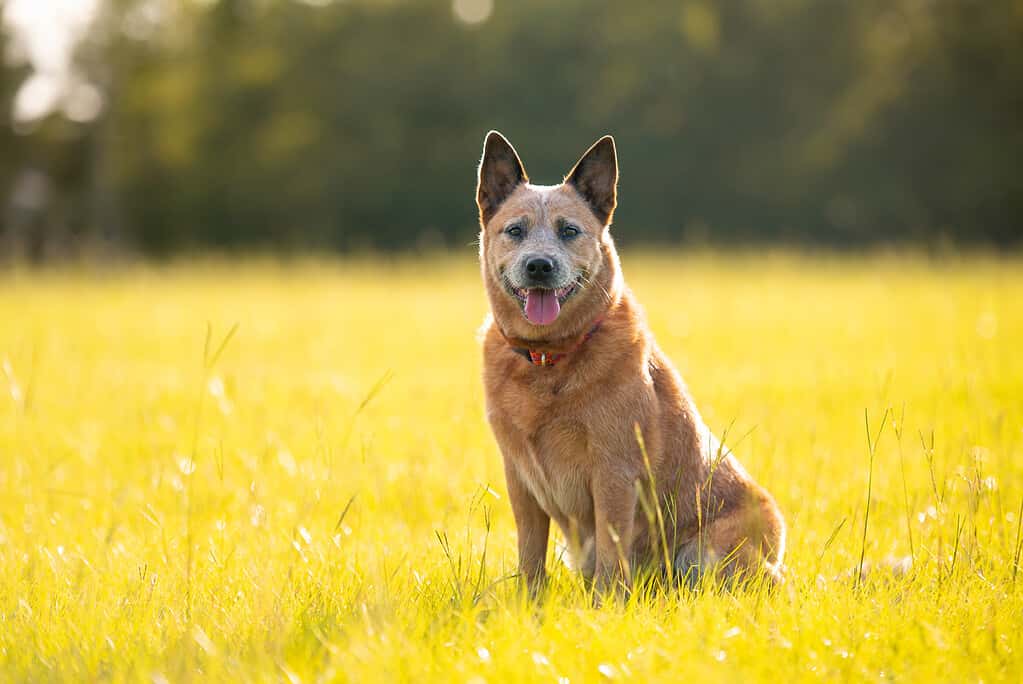
The Queensland Heeler is a single breed. It is commonly differentiated by color, which includes the Blue Heeler and the Red Heeler.
©Tatyana Consaul/ via Getty Images
Cost of Food and Supplies for a Blue Heeler
Initial Costs
In addition to Blue Heeler prices, the initial cost of food and supplies for a Blue Heeler can vary based on the brand of food you choose, the size of your dog, and personal preferences. A high-quality dog food suitable for the nutritional needs of a Blue Heeler can cost around $40 to $60 or more per month. Providing a balanced diet to support their energy levels and overall health is important.
Supplies for a Blue Heeler include items such as food and water bowls, a leash and collar or harness, a comfortable bed, toys for mental stimulation, grooming tools, and a crate or kennel if desired. These initial supplies can range from $150 to $350 or more. Price can vary based on the brand and quality of the items chosen.
Ongoing Costs
In addition to the initial costs, ongoing expenses are necessary for the well-being of your Blue Heeler. This includes regular purchases of food, treats, and various supplies. Monthly costs for food and treats can average between $40 and $80 or more, based on the brand, size, and dietary requirements of your dog. Other ongoing costs include grooming (if done professionally) and routine preventive medications for fleas, ticks, and heartworms. As well as occasional grooming supplies such as shampoo or nail clippers. When averaged out, these costs can range from $20 to $50 or more per month.
Considering potential veterinary expenses as part of the ongoing costs is also an important factor. As previously mentioned, regular veterinary check-ups, vaccinations, and preventive care are essential for maintaining the health of your Blue Heeler. Budgeting for annual veterinary costs, including wellness exams and preventative medications, can amount to $200 to $600 per year. This can vary based on your location and your dog’s specific needs.

The Blue Heeler can make a wonderful companion when properly trained and provided with the right environment to thrive.
©WiindWolfPhotography/ via Getty Images
How Much Does It Cost to Insure a Blue Heeler
When considering Blue Heeler prices, you must also consider pet insurance. Insuring your Blue Heeler is a wise decision to protect against unexpected veterinary costs. The cost of pet insurance for a Blue Heeler can vary based on factors such as the dog’s age and the coverage options chosen.
When insuring a Blue Heeler puppy, the insurance cost is generally lower than insuring an adult or senior dog. This is because younger dogs are less likely to have pre-existing conditions and may require fewer veterinary services initially. Insuring a Blue Heeler puppy can range from $20 to $50 or more per month. It all depends on the chosen insurance provider, coverage limits, deductibles, and any additional add-ons or endorsements.
The cost of insuring an adult Blue Heeler will depend on the dog’s age, overall health, and the coverage options selected. As dogs age, they may develop certain health conditions that can affect the cost of insurance. On average, the cost of insuring an adult Blue Heeler can range from $30 to $70 or more per month.
For senior Blue Heelers, the cost of insurance may increase due to the higher likelihood of age-related health issues. Older dogs may require more frequent veterinary care, medication, and specialized treatments. The cost of insuring a senior Blue Heeler can range from $40 to $100 or more per month. It depends on the dog’s age, health condition, and coverage options chosen.
It’s important to note that these are general cost ranges. The actual price of pet insurance can vary depending on various factors. It is recommended to obtain quotes from different insurance providers and compare coverage options. As well as consider the specific needs of your Blue Heeler before making an informed decision.
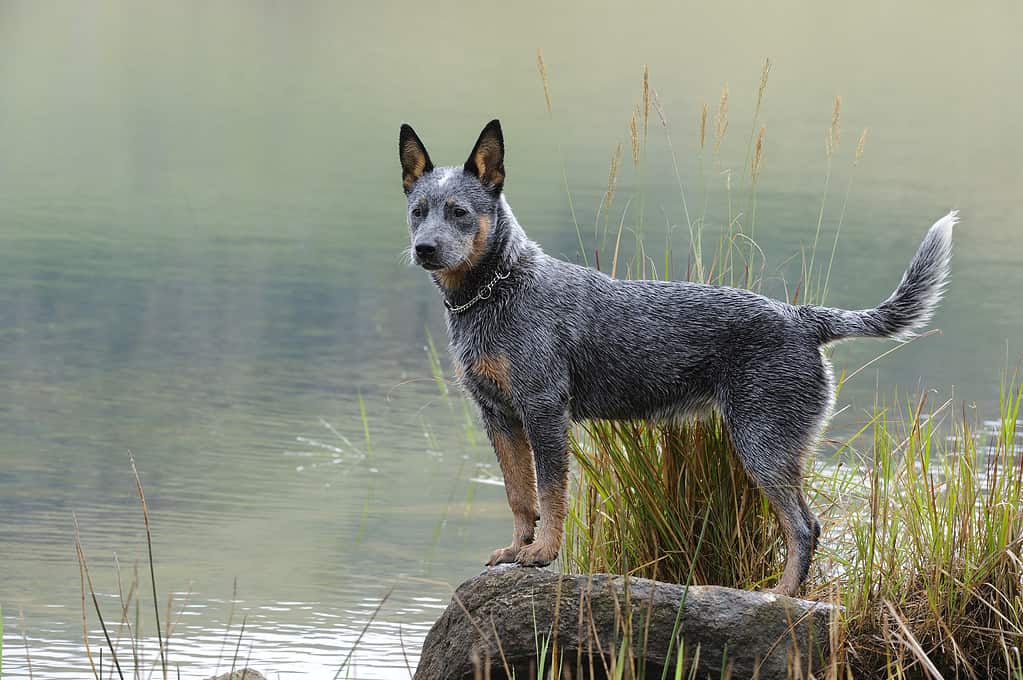
The Blue Heeler is related to the dingo.
©ZE’EV AVNI/ via Getty Images
How Much Does It Cost to Train a Blue Heeler
Training is an essential part of raising a well-behaved and obedient Blue Heeler that can cohabitate with its environment. The cost of training a Blue Heeler can vary depending on the type of training and the specific needs of your dog. There are different training options available to suit various budgets and preferences.
Professional Training
The cost of professional dog training for a Blue Heeler can range from $50 to $150 or more per hour. The cost depends on factors such as the trainer’s experience, location, and the specific training program. Professional training sessions can offer personalized guidance and expertise, helping you address behavioral issues, teach obedience commands, and improve overall manners. Group training classes are another option. This typically costs around $100 to $300 or more for a one to three-week course. These classes provide socialization opportunities for your Blue Heeler while learning basic commands and obedience skills alongside other dogs and their owners. A third option would be a professional board and training program. This is where your dog will be boarded at the trainer’s facility on average for three to six weeks. This option ranges in cost from $1,000 to $3,000 or more.
Self-Led Training
For those on a tighter budget, self-training is a cost-effective option. Resources such as books, online courses, and instructional videos can guide training your Blue Heeler at home. The cost of these resources can range from $15 to $300 or more. It depends on the format and quality of the materials.
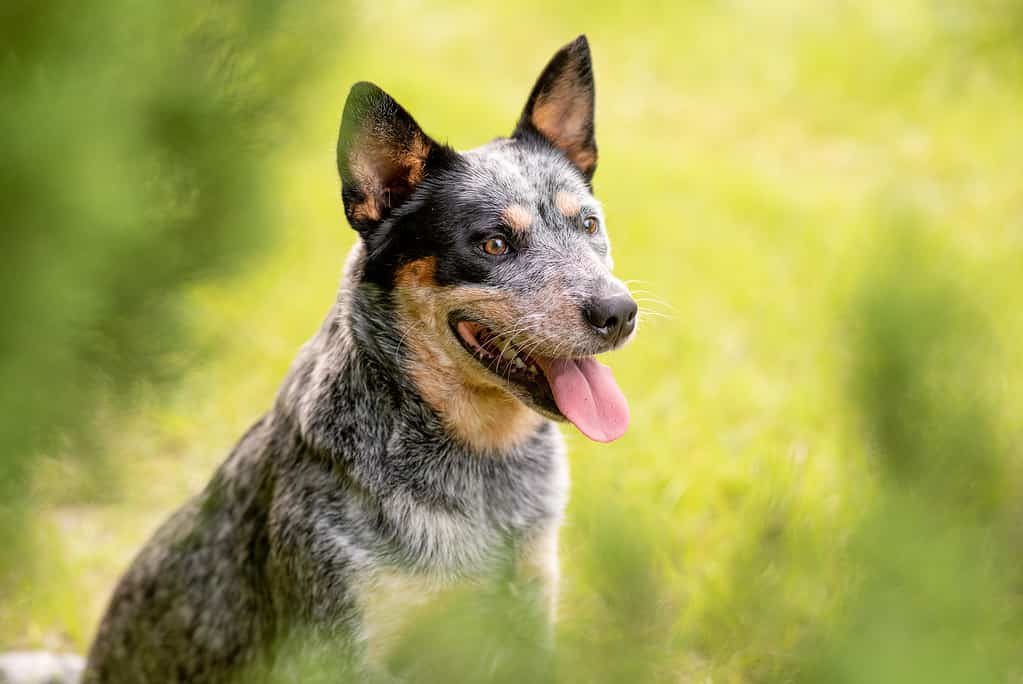
The Blue Heeler is a charismatic breed.
©Tatyana Consaul/ via Getty Images
Training is a Crucial Responsibility
It’s important to note that training is an ongoing process, and consistency and practice are crucial to success. Training should be tailored to your Blue Heeler’s individual needs. It should focus on positive reinforcement techniques, which are effective and humane. Building a strong bond with your Blue Heeler through training enhances their behavior and experience in their environment. It also strengthens the relationship between you and your dog.
Conclusion
In conclusion, Blue Heeler prices can vary depending on several factors. On average, a Blue Heeler puppy from a reputable breeder ranges from $800 to $1,500. However, other options, such as adopting from rescue organizations, can provide more affordable alternatives with adoption fees ranging from $200 to $500. It is crucial to avoid purchasing from puppy mills. They often offer lower-priced puppies but come with significant health and behavioral risks. Lineage, location, and the reputation of the breeder or source can also influence the price. Additionally, it is vital to consider the ongoing costs of owning a Blue Heeler. Other prices include vaccinations, medical expenses, food, supplies, training, and insurance. Responsible pet ownership requires budgeting for these expenses to ensure your animal companion’s health, well-being, and happiness.
The photo featured at the top of this post is © Tatyana Consaul/ via Getty Images
Ready to discover the top 10 cutest dog breeds in the entire world?
How about the fastest dogs, the largest dogs and those that are -- quite frankly -- just the kindest dogs on the planet? Each day, AZ Animals sends out lists just like this to our thousands of email subscribers. And the best part? It's FREE. Join today by entering your email below.
Thank you for reading! Have some feedback for us? Contact the AZ Animals editorial team.







